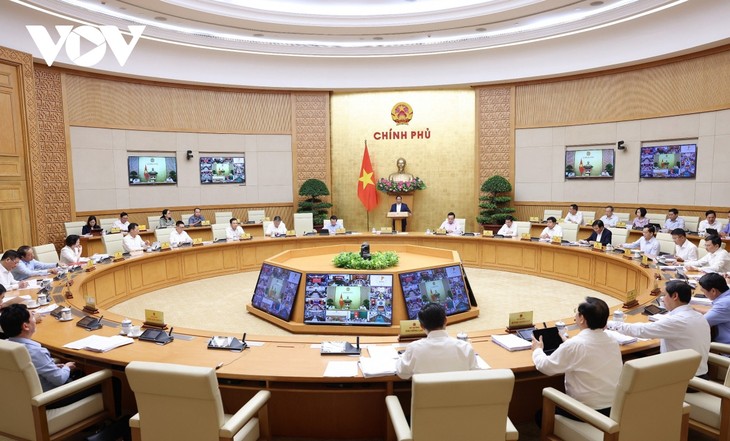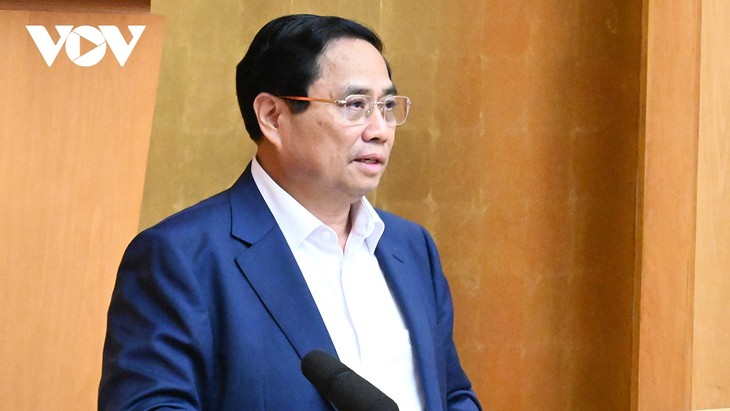(VOVWORLD) -Prime Minister Pham Minh Chinh on Wednesday requested stronger determination from ministries, sectors and localities to achieve the growth target of 6.5% this year as he addressed a Government online meeting with 63 localities to evaluate the socio-economic performance in March and the first quarter as well as set out tasks for April and the second quarter.
 Prime Minister Pham Minh Chinh chairs the Government's online meeting with 63 localities to evaluate the socio-economic situation in March and the first quarter of 2024, and set out tasks for April and the second quarter of 2024. Photo: VOV Prime Minister Pham Minh Chinh chairs the Government's online meeting with 63 localities to evaluate the socio-economic situation in March and the first quarter of 2024, and set out tasks for April and the second quarter of 2024. Photo: VOV
|
At the meeting, Prime Minister Chinh assessed that the socio-economic situation in March and the first quarter of this year followed the recovery trajectory. GDP in the first quarter grew 5.66%, the highest since 2020.
The macro-economy remained stable, inflation was under control, and major balances were guaranteed. Exports and trade surplus kept rising, helping to ensure the balance of payments.
As a result, multiple international organizations and experts are upbeat about Vietnam’s economic outlook with growth predicted to range from 6-6.3%.
However, the Prime Minister warned of challenges to be overcome, such as inflationary pressure, potential risks from financial and currency markets, some key projects encountering slow progress, and global geopolitical instability.
In order to achieve the growth target of 6.5% this year, he requested greater efforts to overcome difficulties, dare to think, dare to do, and improve the business investment environment, ensure macroeconomic stability, and healthy, open and transparent development of all types of markets, including real estate market and capital market.
 Prime Minister Pham Minh Chinh addressing the meeting. Photo: VOV Prime Minister Pham Minh Chinh addressing the meeting. Photo: VOV
|
In particular, PM Chinh requested a focus on implementing "5 thrusts".
They include economic growth in all fields, economic transformation towards green transformation, digital economy, circular economy, knowledge economy, sharing economy and emerging industries and fields; mobilization of all social resources into development investment; three strategic breakthroughs (on fine-tuning institutions; developing a coordinated and modern infrastructure system; and developing human resources to serve development in the new era); foreign affairs and international integration; and the application of science, technology, innovation, start-up, and national digital transformation.